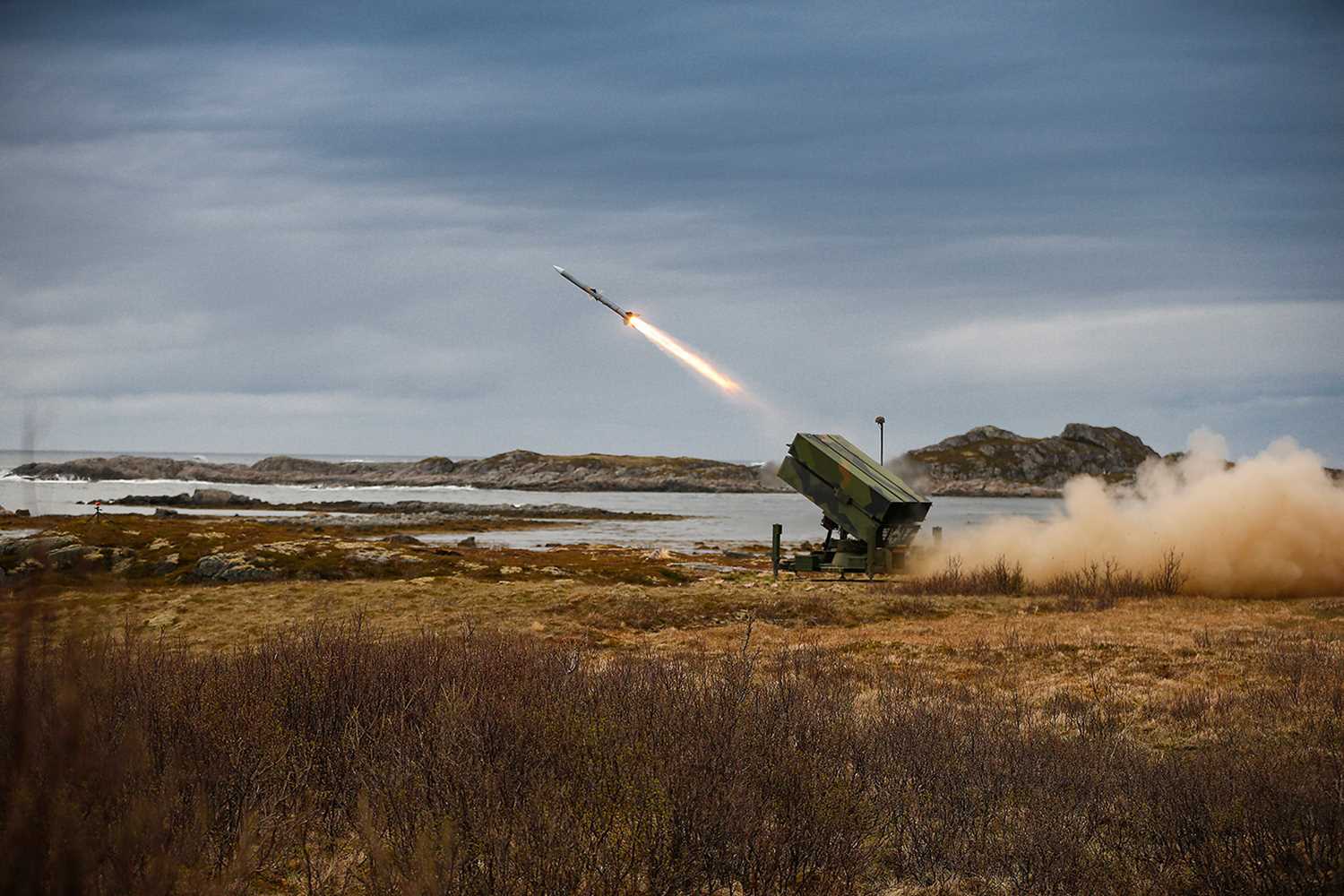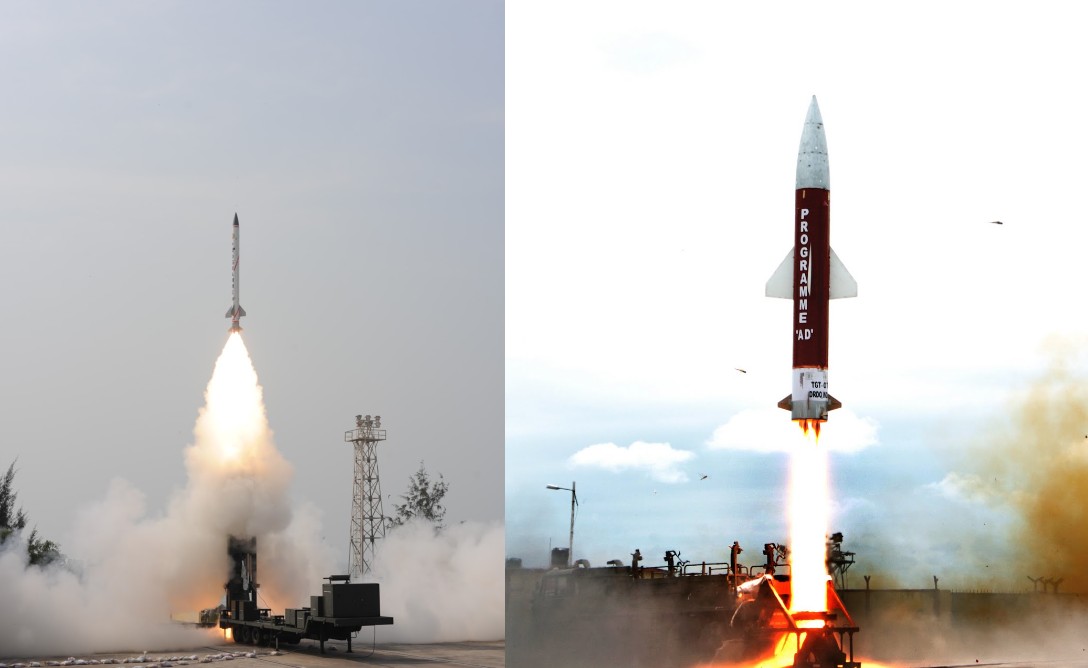
It’s official: The Indian Air Force doesn’t want the American NASAMS-II networked air defence system and has communicated this to the government. Pitched to India since 2017 in the wake of India’s decision to procure the Russian S-400 Triumf, Livefist has learnt that the Indian Air Force has informed the government that it would rather spend resources on the indigenous multi-tiered Ballistic Missile Defence (BMD) program that includes medium and long range surface-to-air missile elements. The latter system has completed the first phase of its development and is currently part of plans for operational deployment by 2022.
That said, it is unclear if the IAF’s word will impact active ongoing India-US negotiations to acquire the NASAMS-II system. The Indian government kickstarted the procurement process in 2018, with the MoD according acceptance of necessity (AoN) for a NASAMS-II based ‘Integrated Air Defence Weapon System’ for the Delhi region, even though it isn’t strictly an anti-missile system. A steep dollar price tag — nearly double the $1 billion budgeted by India for the procurement — has slowed progress.
While the IAF had communicated its opinion on the NASAMS-II earlier this year, it is unclear if it will see things differently following the near-war situation that has bristled on the China border in Ladakh for over two months. What definitely hasn’t changed is the IAF’s support to the Indian BMD program. It must be said that the NASAMS-II and Indian BMD are not directly interchangeable. While the NASAMS-II is an air defence system designed to target aircraft and cruise missiles, the BMD system targets incoming ballistic missiles.

India’s ballistic missile defence (BMD) program, which began development two decades ago, is reported to be ready for deployment in a configuration for India’s national capital territory, with future phases to fine-tune and expand capabilities. At present, the BMD system includes the endo-atmospheric Advanced Air Defence (AAD) interceptor and the exo-atmospheric Prithvi Air Defence (PAD) systems. The IAF has pledged full support to the Indian BMD program and the necessary logistics to see it roll into operational service on time.
While the IAF’s view the NASAMS-II is crucial and may support concerns over the price of the system, it may not ultimately stall an acquisition. Like several items of military hardware, the NASAMS-II wasn’t pitched to meet a specific Indian requirement, but rather an offer made in the wake of India’s decision to buy five regiments of the Russian S-400 air defence missile system, the first of which arrive in India late 2021.
In that sense, the NASAMS-II is very much chess piece in the larger strategic game between the U.S. and Russia with India as the battlefield. Following the S-400 deal, India was able to successfully navigate possible punitive actions under the Trump Administration’s Countering America’s Adversaries Through Sanctions Act (CAATSA) through sustained diplomacy undoubtedly sweetened with the reminder of the near non-stop list of armament contracts awarded to US companies in the last decade. Agreeing to consider the NASAMS-II was very much part of this India-US interplay.
Russia has separately been lobbying hard against India’s decision to even consider the NASAMS-II. In August 2018, Dmitri Shugaev, chief of Russia’s Federal Service of Military-Technical Cooperation (FSMTC) told Livefist, “We don’t see any need for India to buy NASAMS from U.S. as S-400 provides umbrella cover.” That, again, assumes that the NASAMS-II campaign is anchored in a staff requirement.
The NASAMS-II isn’t the first integrated air defence system that’s been pitched to India. Starting in 2004-05, the George W. Bush administration pushed a layered ballistic missile defence system to India comprising the endo-atmospheric Patriot PAC-3 and the exo-atmospheric THAADS (terminal high altitude air defence system). While India had a steady supply of Russian equipment for far longer than its renewed relationship with the US, choosing the S-400 was an especially violent jolt to Washington given the S-400’s reputation and its controversial role in the larger air defence interplay in the region.
The question at hand, now, is if the government will continue with plans to acquire the NASAMS-II or use cost concerns and the IAF’s reservations as leverage to push back. The truth also is that the dynamic has changed overwhelmingly in the last five months. The brink-of-war standoff between India and China in eastern Ladakh since May has turned several pre-standoff perceptions and views on their head. The impact on defence acquisitions and planning is clear to see, with a familiar flood of procurements now jostling for ‘fast track’ priority. Interestingly, the slew of new purchase efforts includes new air defence weaponry from Israel. Last year, the Indian Navy kickstarted a contest to choose new air defence missile weaponry for its future warships, a program that will see a pack of contenders including MBDA’s Sea Ceptor, an improved version of Israel’s IAI Barak, and offerings from Russia, Sweden’s Saab and South Korea.
If a deal for NASAMS-II does go through, it will have been birthed by the all new post-Covid/Ladakh world, one that is seeing an an intensifying alignment between India and the United States.

Excellent decision. Kudos to the IAF top brass to see through the temptation of buying another foreign-made weapon and complicate their already complicated arsenal of weapons. But honestly, I am disappointed to see that Pradyumna BMD system is delayed for 2022. It was supposed to join the forces this year.
I hope that the contract to manufacture these missiles is given to private companies so that they can deliver the BMD in or ahead of schedule to the forces. Since Doklam, things have gotten hairy for us and we just cannot afford to slip up again.
Good decision by the IAF. India must not succumb to US pressure to buy it’s NASAMS systems in lieu of no punitive action for buying the S-400. As they say in Hindi, “Kya zabardasti hai ?”
In the current situation wrt China, we would be stupid to not seriously consider NASAMS and go neck deep with US weapons. As the report says, IAF has not indicated it’s stand post-Ladskh. Indian bureaucrats are so blind they can’t see Russia is China’s best friend now and will never p!as them off.
The problem with US weapons is they lock them up and keep the keys. India does not want to get permission from the US every time to use their weapons against its enemy. If sleepy joe (BIDEN) gets elected, then he will definitely have soft corner for both Pakistan and china.
It will be a political purchase. Hence its returns will be something other than tactical.
Quite possibly in form Intelligence data on PRC.
Very good decision by Armed forces. Now DRDO and production agency need to deliver quickly.